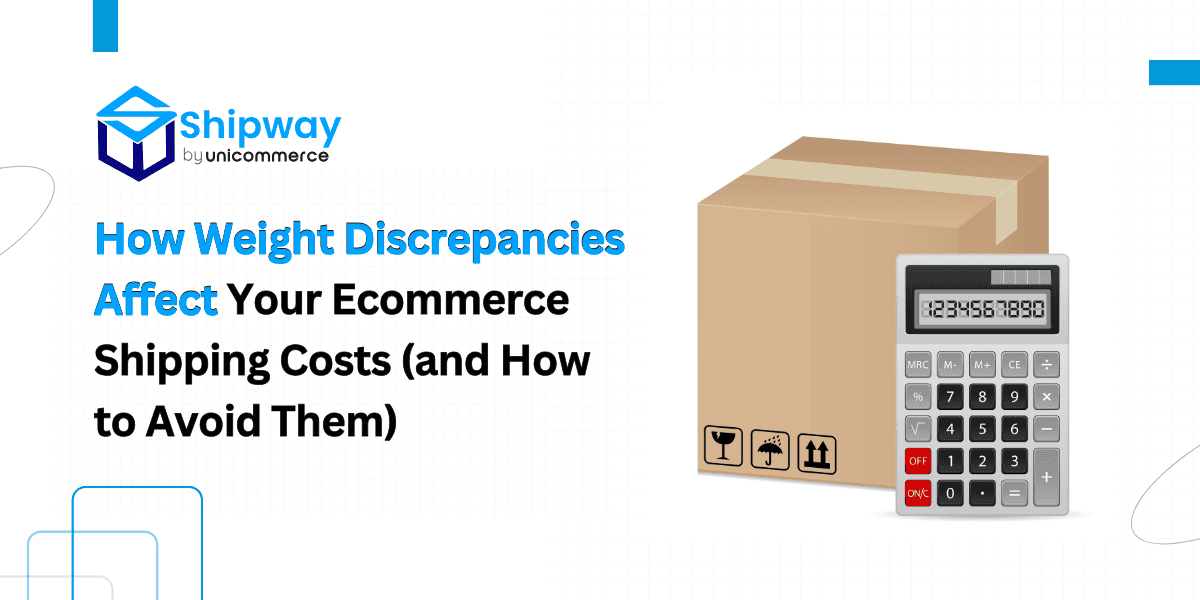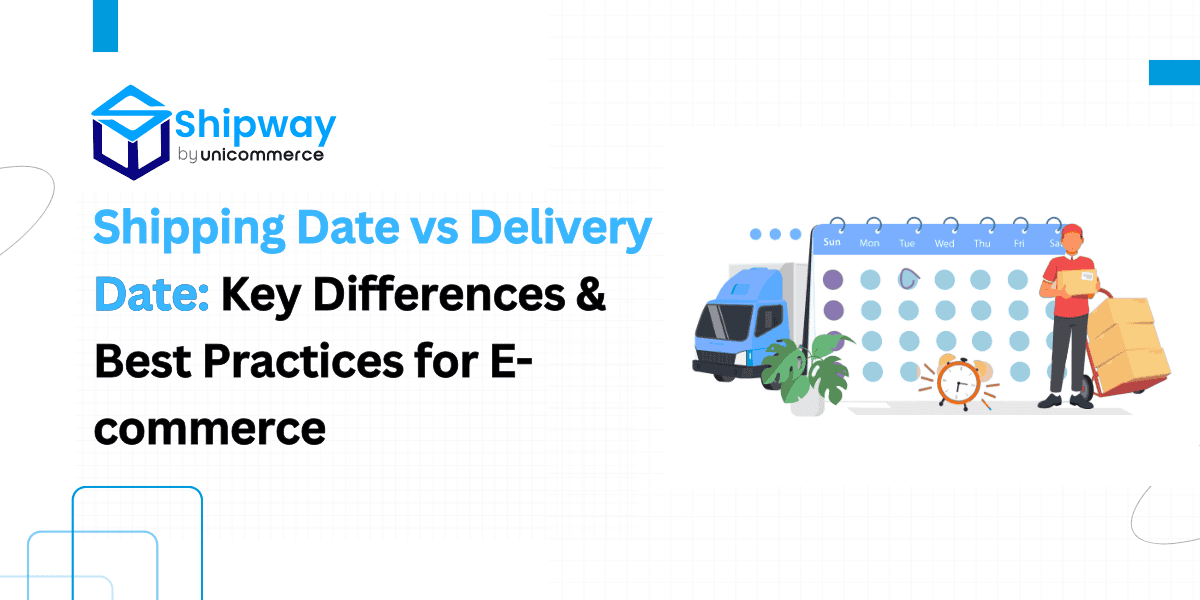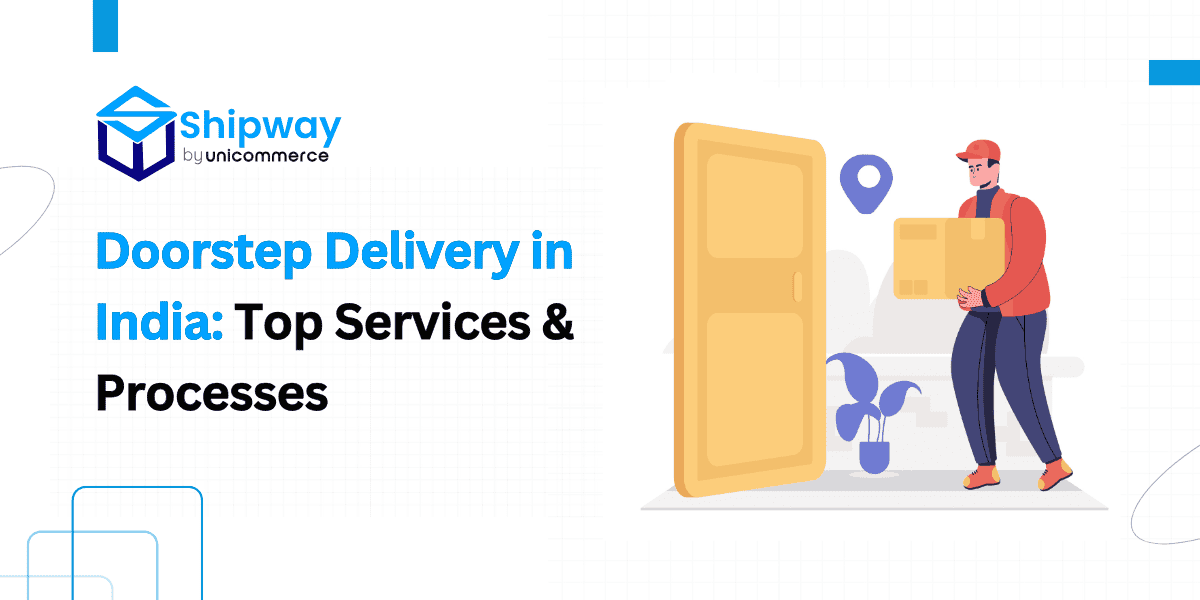Accurate weight data is essential for any online store that ships physical products. When there is a difference between the recorded weight and the actual weight, your shipping expenses may suffer.
This article explores why weight discrepancies occur, and how they can affect your shipping costs. You will also learn about methods, tools, and best practices that help reduce weight errors. Understanding these areas can help to keep your shipping expenses predictable and your operations running smoothly.
How Discrepancies in Weight Affect Shipping Costs?
Shipping costs usually depend on the weight of the package and there are several issues when there is a mismatch between the actual weight and the weight recorded. This section explains the specific ways extra costs can affect your shipping costs.
1. Reduced Profit Margins
Weight mismatches can directly affect your bottom line:
- Unexpected Expenses: When the actual weight is higher than recorded, extra charges lower your profit margin.
- Budgeting Problems: Your shipping budget may be thrown off if weight errors become common. It leads to higher than-planned expenses.
- Cash Flow Disruption: Sometimes unplanned additional costs can disrupt your cash flow. It can affect other areas of your business.
2. Impact on Carrier Agreements
Shipping partners often set rates and discounts based on declared weights:
- Rate Disputes: Carriers may raise issues if the weights recorded on shipping documents do not match their measurements. This may result in disputes or adjustments that affect your contractual terms.
- Missed Savings: Some agreements provide cost reductions for packages within certain weight limits. Inaccurate weights may cause you to lose out on these savings.
- Service Interruptions: In some cases, carriers may delay shipment processing if weight discrepancies are found during inspection.
3. Effects on Customer Experience
Customers expect consistency and fairness in shipping fees. Weight discrepancies can have the following effects:
- Billing Surprises: When shipping costs are recalculated based on true weight, customers might be charged extra than expected.
- Delays in Delivery: Sometimes weight issues can lead to extra verification steps.
4. Overall Operational Management
The overall shipping process is affected by weight mismatches:
- Inefficiencies in Handling: Additional checks and manual interventions may be required to resolve weight differences.
- Administrative Overhead: Extra time and resources are spent on recalibrating equipment and verifying records.
- Inventory Inaccuracies: Weight data is often linked to inventory management. Inaccurate measurements can lead to errors in stock management and order fulfillment.
Techniques to Reduce Weight Discrepancies
In addition to using the right tools, proper techniques are necessary to keep weight records accurate. Below are several methods you can implement.
1. Regular Calibration and Maintenance
Maintaining equipment is key to preventing errors. Follow these steps:
- Set a Regular Calibration Schedule:
- You need to create a routine where scales are calibrated as needed.
- Use standard weights to perform the calibration.
- Document each calibration event to track performance over time.
- Perform Routine Maintenance:
- Always clean scales regularly to avoid dust and debris that affect the readings.
- Monitor Environmental Conditions:
- Some of the stores scale in those areas that have stable temperature and humidity.
- You need to avoid placing scales near heat sources.
2. Standardizing Packaging Procedures
The way you pack items can add variability to the weight, therefore you should plan your packaging strategies to minimize weight disputes. Here are some ways to optimize packaging:
- Use Consistent Packaging Materials:
- Select a standard type of box or envelope for similar products.
- Record the weight of packaging materials separately so that you can subtract it from the total weight when needed.
- Implement a Standard Packing Method:
- Develop a clear procedure for packing items.
- Use checklists to ensure every package is prepared the same way.
- Test Packaging Methods:
- Experiment with different packing techniques to see which offers the most consistent results.
- Document the weight results for each method and choose the one that minimizes variation.
3. Employee Training
A well-trained team is less likely to introduce errors:
- Conduct Regular Training Sessions:
- Teach staff how to use scales correctly.
- Explain the importance of accurate weight recording.
- Provide Written Procedures:
- You can use visual aids like diagrams or photos to show the correct techniques.
- Increase the Peer Review:
- You need to create a system for reporting discrepancies that fixes the issues ASAP.
4. Quality Control Checks
Regular quality checks help catch errors before they affect shipping:
- Double-Check Measurements:
- Have a second employee verify the weight of randomly selected packages.
- Record both measurements and compare them to identify any differences.
- Implement Spot-Checks:
- Randomly select a few shipments each day for a detailed weight review.
- Use these checks to identify trends or recurring issues.
- Maintain Detailed Records:
- Keep logs of all quality control checks.
- Analyze these records periodically to identify problem areas that need attention.
5. Using Technology for Data Accuracy
Modern software and hardware can help reduce manual errors:
- Integrate Scales with Software:
- Connect your weighing devices directly to your order management system.
- This direct link minimizes errors from manual data entry.
- Set Up Alerts:
- Configure your system to send alerts when the recorded weight deviates beyond acceptable limits.
- Use these alerts to trigger an immediate review of the shipment.
- Monitor Data Trends:
- Use dashboard tools to view weight data in real-time.
- Analyze the data to see if discrepancies occur at specific times or with particular products.
How Weight Discrepancies Affect Your Ecommerce Finances?
Weight mismatches not only create operational issues but also have a direct effect on your finances and budgets. Let us explore the financial consequences of weight discrepancy on your ecommerce business in detail. An eCommerce development company specializes in creating, customizing, and optimizing online stores and digital shopping platforms.
1. Unexpected Shipping Fees
Extra shipping fees can arise when the true weight of a package is higher than expected. These fees may include:
- Overage Charges: Carriers may add fees when a package exceeds a weight limit.
- Adjustment Costs: If the true weight is later identified, you may need to pay a difference between the quoted rate and the actual rate.
2. Impact on Profit Margins
Over time, these additional costs can eat into your profit margins:
- Lower Earnings per Shipment: Each package that costs more to ship than planned reduces overall profit.
- Budget Shortfalls: If your shipping budget is based on expected weights, recurring discrepancies can lead to higher operating costs.
3. Effects on Carrier Relationships
When weight data is not accurate, your business may face issues with shipping partners:
- Contract Revisions: Sometimes the repeated discrepancies may force you to renegotiate the terms or face penalties.
- Trust Issues: Consistent errors may lead carriers to question the reliability of your records. It affects the future rates.
4. Administrative Overhead
Addressing weight discrepancies takes time and resources:
- Manual Corrections: There is staff that may need to spend additional hours verifying & correcting weight records.
- System Downtime: Time spent dealing with these issues could be used for other productive tasks. It impacts overall efficiency.
How Does Weight Discrepancies Impact Your Customer Satisfaction?
Sometimes accurate shipping costs are essential to maintain customer trust. The weight errors can negatively affect customer experience in several ways.
1. Unexpected Costs at Checkout
If the system adjusts shipping fees after an order is placed:
- Billing Surprises: In certain cases, the customers may see a different cost than what was originally quoted. This causes dissatisfaction.
- Cart Abandonment: This occurs when high or unexpected fees may cause customers to cancel their orders.
2. Delays in Shipment Processing
When discrepancies arise, packages may need to be re-weighed:
- Delivery Delays: Additional processing steps can slow down the shipping timeline.
- Communication Gaps: When the customers may not be informed in a timely manner about delays. This leads to more frustration.
3. Overall Trust and Reputation
Maintaining transparency in shipping practices is vital:
- Customer Loyalty: Consistent and accurate weight records help build trust.
- Word of Mouth: Satisfied customers are more likely to share positive experiences. At the same time, those face issues may deter potential buyers.
Adjusting Processes to Manage Weight Discrepancies
When weight differences occur, having a structured process can help resolve issues quickly. Follow these steps to adjust your processes.
1. Review and Correct Data
When you notice a mismatch:
- Compare Recorded and Actual Weight:
- Make sure the weight that is shown in your system is against the actual measured weight of the package.
- Identify whether the error is isolated or part of a pattern.
- Update Your Records:
- Correct the weight data in your system immediately.
- Document the change for future reference.
- Communicate with Relevant Departments:
- Inform the shipping team and any related staff of the discrepancy.
- Ensure that all systems reflect the correct weight data.
2. Discuss with Shipping Partners
Address issues with your carriers to avoid further cost discrepancies:
- Report Issues Promptly:
- Contact your ecommerce shipping partner if you notice differences that affect billing.
- Provide clear documentation of the measurements and corrections made.
- Negotiate Adjustments:
- You need to work with the shipping carrier to adjust any extra fees incurred due to incorrect weight data.
3. Monitor Trends Over Time
Regular review of weight data can help pinpoint systemic issues:
- Generate Periodic Reports:
- Use weight tracking software to compile reports on discrepancies.
- Look for trends like any particular times of day, product types, or packaging methods that give such errors.
- Hold Regular Meetings:
- You can discuss the finalized reports with your team during scheduled meetings.
- Identify areas that need any type of improvement.
- Revise SOP (Standard Operating Procedures):
- Update the written guidelines based on data trends and feedback.
- Ensure that any changes are communicated clearly.
Key Checklist to Manage Shipping Costs
- Equipment Check:
- Verify that all scales are functioning correctly.
- Calibrate each scale using standard weights regularly.
- Standardize Packaging:
- Use a consistent type of box for similar items.
- Document the weight of packaging materials.
- Employee Training:
- You need to provide regular training on the use of scales.
- Use checklists to guide the weighing & packaging process.
- Quality Control:
- Implement random spot checks on shipments.
- Maintain a log of any discrepancies found.
- Data Integration:
- Connect scales to your order management system to reduce manual data entry.
- Set up alerts for weight variations beyond a set limit.
- Communication with Carriers:
- Share accurate weight data + update shipping partners as needed.
- Negotiate any adjustment fees if discrepancies are found post-shipping.
- Record Keeping:
- Document every calibration, quality check, and correction.
- Review records monthly to identify recurring issues.
- Process Reviews:
- Hold team meetings to discuss weight discrepancies and improvement strategies.
- Update procedures based on feedback and data analysis.
Long-Term Benefits of Accurate Weight Data
Focusing on precise weight measurement is not just about avoiding extra fees. Several long-term benefits can improve the overall efficiency of your ecommerce operations.
1. Improved Budget Accuracy
When your weight data is accurate:
- Cost Predictability: You can forecast shipping expenses with greater certainty.
- Better Financial Planning: Accurate figures allow you to allocate your budget more effectively, reducing surprises in your monthly expenses.
2. Stronger Carrier Relationships
Reliable data builds trust with your shipping aggregators:
- Fewer Disputes: Accurate weight records minimize disagreements over extra fees.
- Smoother Negotiations: With a track record of precise measurements, you are in a position to negotiate rates and terms.
3. Improved Customer Experience
When shipping fees and delivery times meet customer expectations:
- Higher Satisfaction: Consistency in costs & delivery always results in happier customers.
- Repeat Business: Satisfied buyers are more likely to return to buy.
4. Streamlined Operations
Accurate data has a ripple effect in many areas:
- Inventory Management: Precise weight records improve stock tracking and order fulfillment.
- Operational Efficiency: Fewer errors mean less time spent on corrections and more on growth activities.
5. Competitive Positioning
Over time, an efficient shipping process contributes to the overall strength of your business:
- Cost Savings: Reducing extra shipping fees allows you to invest in other areas of your business.
- Reputation for Reliability: Consistency in order handling builds your brand’s reputation.
Conclusion
Shipping weight discrepancies can lead to unexpected costs which silently eat into your profits! From unexpected fees to contract disputes and frustrated customers, inaccurate weight records can throw your entire shipping budget off track.
The prevent these ecommerce businesses need to stay ahead with smart shipping integrations, calibrate equipment, standardize packaging, and track trends to avoid costly mistakes. But to make it easier for ecommerce businesses, Shipway offers a smart solution to minimize weight discrepancies.
Shipway’s powerful tools and processes like image verification, weight freezing, and historical tracking, ensure accuracy and transparency. Plus, with dedicated Key Account Manager (KAM) support, you get expert assistance in reducing extra costs and streamlining operations.
Take control of your shipping expenses today. With Shipway, you can minimize weight discrepancies, boost customer trust, and drive long-term profitability effortlessly!
You may also like...
Shipping Date vs Delivery Date: Guide for Ecommerce Sellers & Buyers
Thinking “Order is Shipped” means “Delivered”? Not quite. In e-commerce, shipping and delivery dates are not interchangeable. In simple terms, a...
read moreDoorstep Delivery in India: Top Services & Processes in Ecommerce
Groceries, medicines, even fuel and water, getting them delivered straight to your doorstep is now second nature. But not too long ago, this level...
read moreHow to Effectively Reduce E-commerce RTO% in 2025?
E-commerce sellers know that RTO (Return to Origin) is a big headache. An RTO happens when an order doesn’t reach the customer and is sent back to...
read more





